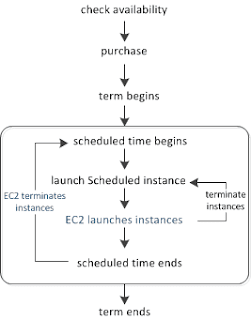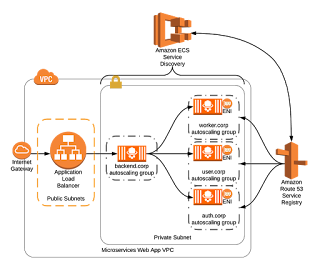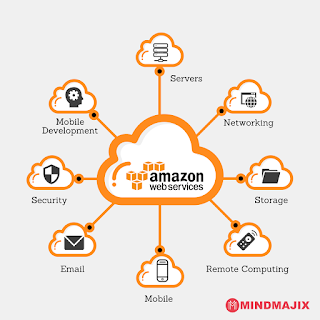Scheduled Instances
Scheduled ReservedInstances (Scheduled Instances) allow you to purchase faculty reservations that
recur on a daily, weekly, or monthly basis, with a particular start time and length,
for a one-year term. You reserve the capacity in advance, so that you know it
is available when you need it. You pay for the time that the instances are
scheduled, even if you do not use them.
ScheduledInstances are a good choice for workloads that do not run continuously, but do
run on a regular schedule. For example, you can use Scheduled Instances for an
application that runs during business hours or for batch processing that runs
at the end of the week.
If
you necessitate a ability condition on a incessant basis, Reserved Instances
might meet your needs and decrease costs. For more information, see scheduled
instances If you are flexible about when your
instances run, Spot Instances might meet your needs and decrease costs.
How to scheduled instances:
Amazon EC2 sets aside pools
of EC2 instances in each Availability Zone for use as Scheduled Instances. Each
pool supports a specific combination of instance type, operating system, and
network.
To
get started, you must search for an available schedule. You can search across
multiple pools or a single pool. After you locate a suitable schedule, purchase
it.
You
must launch your Scheduled Instances during their scheduled time periods, using
a launch configuration that matches the following attributes of the schedule
that you purchased: instance type, Availability Zone, network, and platform. what
time you do so, Amazon EC2 launches EC2 instances on your behalf, based on the
specified launch specification. Amazon EC2 must ensure that the EC2 instanceshave ended by the end of the current scheduled time period so that the capacityis available for any other Scheduled Instances it is set aside for. Therefore,
Amazon EC2 terminates the EC2 instances three minutes before the end of the
current scheduled time period.
You
can't stop or reboot Scheduled Instances, but you can terminate them manually
as needed. If you terminate a Scheduled Instance before its current scheduled
time period ends, you can launch it again after a few minutes. Otherwise, you
must wait until the next scheduled time period.
The
following diagram illustrates the lifecycle of a Scheduled Instance.




Comments
Post a Comment